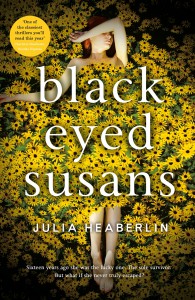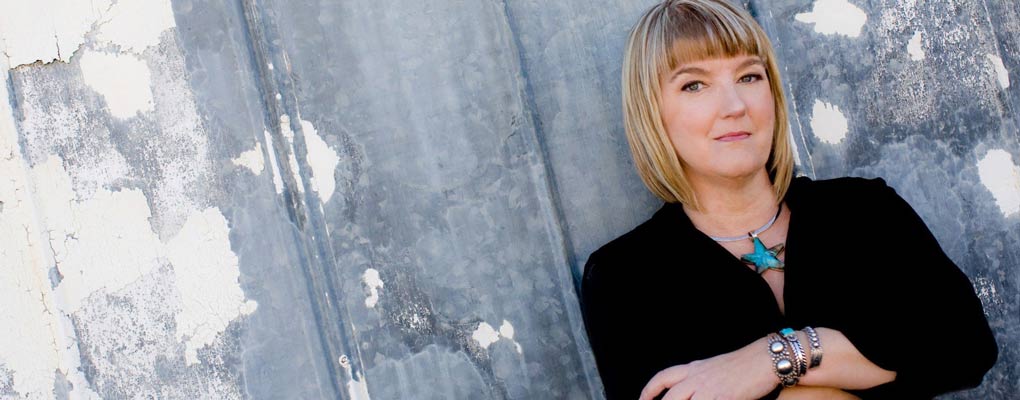Features
Behind the Book: Black-Eyed Susans by Julia Heaberlin
I remember exactly when 16-year-old Tessie started speaking to me. It was the middle of the night. I was in bed with a psychology textbook, reading about a therapist’s technique for victims of trauma called Three Wishes. I was beginning my Black-Eyed Susans research. At that point, I only knew the star of my novel in the abstract. She was a girl, sitting in a psychiatrist’s office, pulled out of a grave of old bones with no memory of how she got there. She was just a pile of bones herself.
“Do you really think I would fall for that technique?” she asked sharply. “How stupid do you think I am?”
For me, a journalist, a lover of authenticity, the voices don’t speak without research. When people ask how my characters or plots are “inspired,” I think they are expecting an answer about the magical place where ideas come from. If I’m stuck, I know I have to get up from the computer and hang in the shadows of a place I’ve never been, or interview human beings who’ve stood in places I never want to, or tunnel to places inside myself that I’d rather not go.
Because the thriller writers I love most, who inspire me most, have something bigger to say. Who explored the heart of darkness better than Thomas Harris in The Silence of the Lambs? Who made me think harder about overpopulation  than Dan Brown in Inferno? Who has ever cut open the ugly, familiar parts of marriage as bloodily as Gillian Flynn? Who inspired new generations of forensic scientists and jurists more than Patricia Cornwell?
than Dan Brown in Inferno? Who has ever cut open the ugly, familiar parts of marriage as bloodily as Gillian Flynn? Who inspired new generations of forensic scientists and jurists more than Patricia Cornwell?
And so, for Black-Eyed Susans, a novel about a chase for justice and elusive memories decades after a terrible crime, I researched. I read Lenore Terr’s landmark study of the twenty-six Californian children who survived after being kidnapped and buried alive in a quarry in 1976. I planted myself outside the Texas Death house in Huntsville as the revving of angry police motorcycles cheered on the execution of a cop killer who could hear the roar through the walls while the needle was going in.
I found Rhonda Roby, world-renowned for using mitochondrial DNA to identify old and degraded bones, and peered through the windows of her lab as a skull without a name was being sawed and scraped for DNA. Watched her face as she told me she did her job for the invisible families, waiting. Imagined her as she stood at the site of 9/11 with other scientists while human ashes rained down, over the bones of a serial killer victim, with the grieving families at the mass graves of Pinochet.
I wrote her story first as a journalist. Then I placed her spirit inside the fictional pages of Black-Eyed Susans along with the philosophy of Texas death penalty attorney David Dow, who has represented more than a hundred men on Death Row.
I spoke by phone to an innocent man he helped free: the remarkably forgiving Anthony Graves, trapped in prison for eighteen years for the vicious murder of a family he did not commit. He still likes to keep his shades drawn. You can find him here.
I listened to the people of the South, who I hope simmer without stereotype in all of my books. Their cadence, humor, dreams, silences.
When all else failed, I stared up at the wide-open Texas sky. Because if I have a magic place, that is it.


Please note: Moderation is enabled and may delay your comment being posted. There is no need to resubmit your comment. By posting a comment you are agreeing to the website Terms of Use.